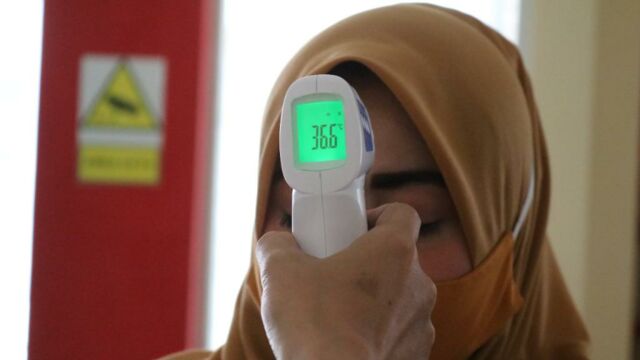Lassa fever: This is how humans catch the virus

This is the first time the illness has been detected in the UK since 2009 but how exactly is it transmitted?
Lassa fever is a disease was named after the Nigerian town where the first cases were documented in 1969.
Discover our latest podcast
According to the Centers for Disease Control and Prevention (CDC) in the United States, 100,000 to 300,000 Lassa fever infections occur each year, with around 5,000 fatalities. So how is this disease transmitted?
Lassa fever
Lassa fever is an Ebola-like virus that can cause vaginal bleeding and deafness. This is the first time the virus has been found in the United Kingdom in more than a decade.
More under this adMore under this adAlthough the virus has spread to several West African nations, it is not as deadly or contagious as Ebola. The Lassa virus kills 1% of those afflicted, according to the World Health Organization. The three confirmed instances of Lassa fever, one of which has resulted in death, highlight the dangers of new infectious illnesses.
Around a fifth of people who survive the sickness develop deafness. In half of these cases, hearing recovers partially after one to three months.
More under this adMore under this adRead more:
- Lassa fever: Most common symptoms of the disease
- Lassa fever: Two cases of Ebola-like virus that causes vaginal bleeding has been detected
- COVID-19: This shocking symptom has been identified
How does the transmission occur?
The Lassa virus's reservoir, or host, is a rodent known as the 'multimammate rat.' The rodents are prevalent in west, central, and east Africa, and they frequently reside in areas where humans store food.
Dr Susan Hopkins, UKHSA's top medical adviser, said:
Cases of Lassa fever are rare in the UK and it does not spread easily between people. The overall risk to the public is very low.More under this adMore under this ad
Contact with sick rats' urine, faeces-tainted food, or household objects are the main transmitters of the Lassa virus. It can also spread through virus-infected bodily fluids and the fever has a 21-day incubation period.
Dr. Hopkins adds:
We are contacting the individuals who have had close contact with the cases prior to confirmation of their infection, to provide appropriate assessment, support and advice.More under this adMore under this ad
Read more: